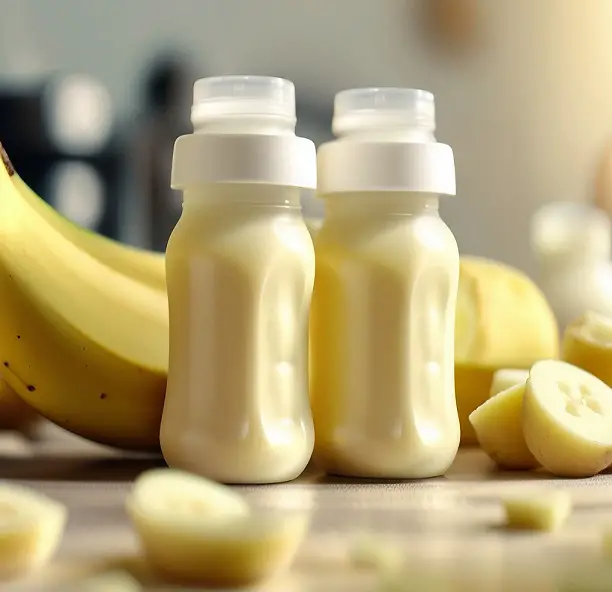If you’re considering switching from cow milk formula to goat milk formula for your baby, you’re not alone. Many parents opt for goat milk formula due to its composition and potential benefits for their little ones. However, this is a decision that should not be taken lightly, as it can affect your baby’s digestion and absorption of nutrients. In this guide, we will explore why you might want to make the switch, the pros and cons of each type of formula, how to gradually transition your baby to goat milk formula, and some tips for making the switch as smooth as possible.

Key Takeaways:
- Switching from cow milk formula to goat milk formula can have potential benefits for your baby’s digestion and overall health.
- Both cow milk formula and goat milk formula have pros and cons that should be carefully considered before making a decision.
- Gradual transitioning is essential to allow your baby’s body to adjust to the new formula.
- Consulting with healthcare professionals and following some practical tips can ensure a smooth switch to goat milk formula.
Why Switch from Cow Milk Formula to Goat Milk Formula?
If your baby is having trouble digesting cow milk formula or experiencing related issues such as colic, constipation, or reflux, you may want to consider switching to goat milk formula. Goat milk formula is easier to digest and absorb than cow milk formula, making it a great alternative for babies with sensitive stomachs.
The composition of goat milk formula is closer to breast milk, containing smaller fat globules and higher levels of medium-chain fatty acids. These factors make it easier for the baby’s body to break down and utilize the nutrients found in the formula, reducing the risk of digestive issues and optimizing nutrient absorption.
In addition to being more easily digestible, goat milk formula contains different nutrients than cow milk formula. It is rich in minerals such as calcium, potassium, and magnesium, and has higher levels of vitamin A and C. These nutrients can benefit the baby’s overall health and development, supporting the immune system, bone growth, and vision.
While cow milk formula is widely available and often more affordable than goat milk formula, it may not be the best fit for every baby’s digestion and nutritional needs. It is important to weigh the pros and cons of both formula options and consult with a healthcare professional before making any changes to your baby’s diet.
Pros and Cons of Cow Milk Formula and Goat Milk Formula
When considering a switch from cow milk formula to goat milk formula, it’s important to understand the pros and cons of each type. While both formulas provide essential nutrients for your baby’s growth and development, there are some differences to consider.
Pros of Cow Milk Formula
Cow milk formula is widely available and generally less expensive than goat milk formula. It also has a familiar taste that many babies enjoy, which can make the transition to formula feeding easier. In addition, cow milk formula is often enriched with additional nutrients such as iron and vitamin D to support your baby’s health.
Cons of Cow Milk Formula
Some babies may have difficulty digesting cow milk formula due to its high lactose content. It may also cause digestive discomfort, such as gas or bloating. Additionally, cow milk formula may contain hormones or antibiotics given to cows, which may be a concern for some parents.
Pros of Goat Milk Formula
Goat milk formula is often recommended for babies who have trouble digesting cow milk formula. It has a lower lactose content and smaller fat particles, making it easier to digest and absorb. Goat milk formula also contains more medium-chain fatty acids, which are beneficial for brain development and immune function.
Cons of Goat Milk Formula
Goat milk formula is generally more expensive than cow milk formula and can be harder to find in stores. Some babies may not like the taste of goat milk formula, which can make the transition more difficult. It also may not be enriched with as many additional nutrients as cow milk formula, although some varieties are fortified with essential vitamins and minerals.
Ultimately, the decision to switch from cow milk formula to goat milk formula will depend on your baby’s individual needs and preferences. Be sure to consult with your pediatrician or lactation consultant before making any changes to your baby’s diet.
Gradually Switching from Cow Milk Formula to Goat Milk Formula
Before making any changes to your baby’s formula, it’s important to consult with a doctor, pediatrician, or lactation consultant. They can provide personalized guidance based on your baby’s individual needs and health history.
If you do decide to switch to goat milk formula, it’s best to make the transition gradually. This allows your baby’s body to adjust to the new formula without causing any sudden changes to their digestive system.
You can begin by replacing one feeding of cow milk formula with goat milk formula every two to three days. Over time, you can gradually increase the number of feedings with goat milk formula while decreasing the number with cow milk formula.
It’s important to monitor your baby’s reactions during the transition process. Be on the lookout for any signs of discomfort, such as excessive gas or fussiness. If you notice any issues, you can slow down the transition or consult with your healthcare provider for additional guidance.
Remember to always follow the instructions on the formula packaging for preparation and serving. This ensures that your baby is receiving the appropriate amount of nutrients and is not at risk of overfeeding or underfeeding.
Tips for a Smooth Transition
Switching from cow milk formula to goat milk formula requires careful planning and consideration. Here are some tips to help make the transition a success:
- Gradual transition: Introduce the goat milk formula slowly, mixing it with cow milk formula in decreasing amounts over several days or weeks. This will allow your baby’s digestive system to adjust gradually.
- Consult with your healthcare provider: Talk to your pediatrician or lactation consultant before making any changes to your baby’s diet. They can advise you on the best transition plan for your baby’s needs.
- Monitor your baby’s reactions: Keep an eye out for any signs of discomfort, such as diarrhea, constipation, or excessive spitting up. If your baby experiences any of these symptoms, consult with your healthcare provider.
- Stick to a feeding routine: Maintaining a consistent feeding routine can help your baby adjust to the new formula. Try to keep the same feeding times and amounts as much as possible.
- Be patient: It may take some time for your baby to fully adjust to the new formula. Be patient and give your baby time to adapt.
Conclusion
Switching from cow milk formula to goat milk formula can be a beneficial choice for your baby’s health and development. Goat milk formula is easier to digest and absorb, reducing the risk of digestive issues. It also contains a variety of nutrients that can benefit your baby.
However, it’s important to consider the pros and cons of both types of formula before making a decision. Factors such as taste, cost, and availability may also influence your decision.
A gradual transition plan is crucial to ensure your baby’s body adjusts to the new formula. Consult with your doctor, pediatrician, or lactation consultant for personalized guidance on how to introduce goat milk formula gradually.
Lastly, some tips for a smooth transition include maintaining consistency in feeding routines, monitoring your baby’s reactions, and seeking additional support if needed. Remember to be patient and take it one step at a time.




